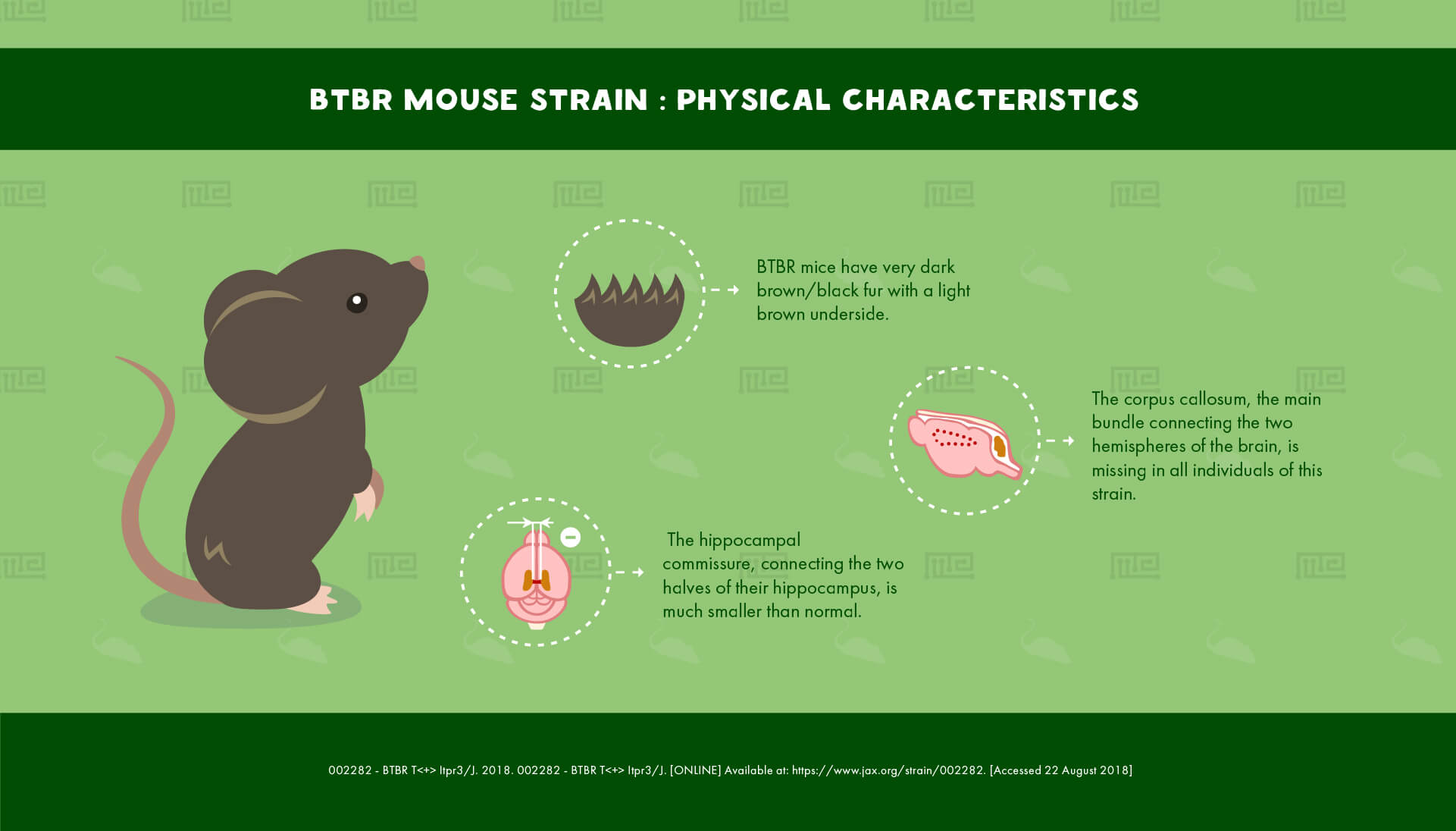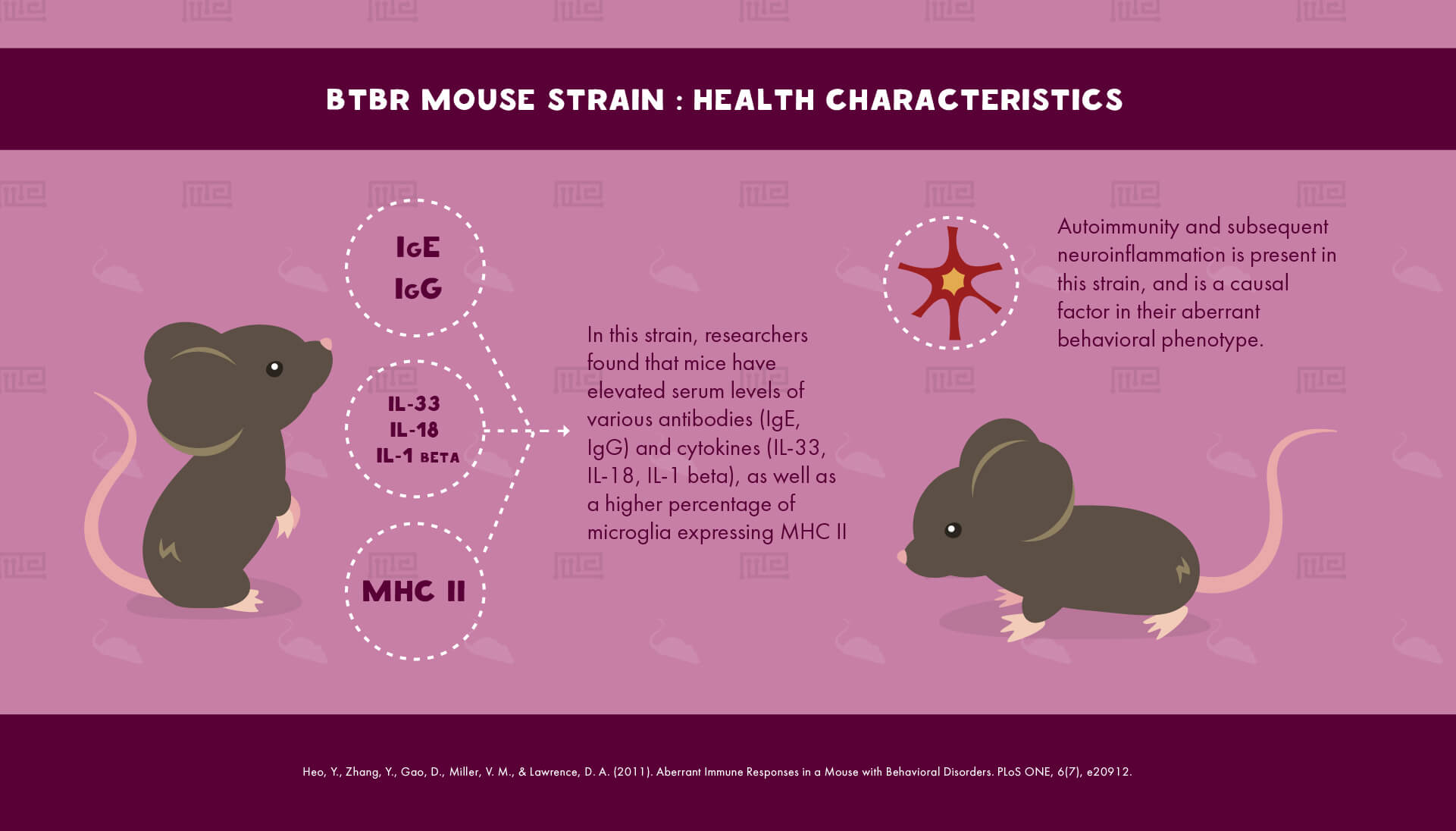Overview
BALB/cByJ is an inbred strain of mouse model that is closely related to the more commonly used BALB/cJ strain. BALB/cByJ mice are significantly less aggressive than their more popular relative.
History
The ancestral BALB/c strain was established in New York in the 1920s, before being taken to the Jackson Laboratory in the following decade. In the late 1930s, mice of the substrain known as BALB/cAn were obtained by DW Bailey at the NIH, who later brought them to University of California Medical School in San Francisco. It was during this time that the two strains diverged.[1][2]
A fire at the Jackson Laboratory in 1947 killed stocks of all mice apart from BALB/cJ. When the newly developed BALB/cByJ came to the JAX production facility in 1975, BALB/cJ and BALB/cByJ were the only two BALB mouse strains left. Both are maintained at the Jackson Laboratory today.[1][2]
Physical Characteristics
BALB/cByJ, like BALB/cJ, are albino and so have completely white fur. They develop hypoglycemia after fasting for 18 hours, and a fatty liver after more extended periods of fasting. Also like BALB/cJ, a large proportion of this strain shows callosal agenesis (failure of the corpus callosum to develop).[1]
Behavioral Characteristics & Handling
Whereas BALB/cJ mice are well known for their characteristic high aggression, with males in the same enclosure tending to fight, mice of the BALB/cByJ strain are significantly more placid.[1] However, one study[3] reported no significant difference between BALB/cJ and BALB/cByJ in the resident-intruder test, suggesting their aggression differences may be contextual.
A Canadian study comparing the response to the handling of 21 commonly used mouse strains found that BALB/cByJ mice were extremely placid, with almost no displays of evasive behavior when captured or struggling when held. The frequency of squeaking was moderate. Hence, researchers should be confident of great ease in handling mice of this strain.[4]
BALB/cByJ are also noted for much superior reproductive performance than BALB/cJ, as well as superior maternal care. BALB/cByJ females are consequently often used as foster mothers.[1][5]
Health Characteristics
BALB/cByJ mice produce plasmacytoma after injection with mineral oil, which allows this strain to be used for the production of monoclonal antibodies. While BALB/cByJ exhibit this phenotype, BALB/cJ mice are generally resistant to mineral oil induced plasmacytoma production.[1]
Cancer and tumor incidence for most of the lifespan of this strain is quite low. In particular, mammary tumors are generally not seen. In later life, a variety of cancers are observed with these mice, including lung, renal, reticular neoplasm, and occasionally myoepitheliomas arising from exocrine gland tissue.[1]
BALB/cByJ have a deficiency in the short chain of acyl Coenzyme A dehydrogenase, which confers organic aciduria, a condition in which amino acid metabolism is disrupted, causing unusual amino acids to build up in the urine.[1][5]
Like many other commonly used laboratory mice strains, including BALB/cJ, BALB/cByJ mice possess the cadherin mutation Cdh23ahl which confers hearing loss from around ten months of age.[1]
Finally, this strain shows several hematological abnormalities not seen in BALB/cJ, including elevated levels of triglycerides and free fatty acids.[5]
Major Experimental Uses
As a general purpose mouse model, the BALB/cByJ strain finds a broad range of research applications, including in studies of mammary cancer, autoimmunity, callosal agenesis, hearing defects, and immunology. BALB/cByJ mice are also frequently used for the generation of monoclonal antibodies.[1]
References
- 001026 – BALB/cByJ. 2018. 001026 – BALB/cByJ. [ONLINE] Available at: https://www.jax.org/strain/001026. [Accessed 16 August 2018].
- JAX NOTES: A Brief History of the Two Substrains of BALB/c, BALB/cJ, and BA – The Jackson Laboratory. 2018. JAX NOTES: A Brief History of the Two Substrains of BALB/c, BALB/cJ, and BA – The Jackson Laboratory. [ONLINE] Available at: https://web.archive.org/web/20110619092710/http://jaxmice.jax.org/jaxnotes/archive/443a.html. [Accessed 16 August 2018].
- A. Hilakivi, R.G. Lister. Comparison between BALB/cJ and BALB/cByJ mice in tests of social behavior and resident‐intruder aggression. Aggressive Behavior. Volume 15, Issue 4. 1989. pp. 273-280
- Wahlsten, D. Metten, P. Crabbe, JC. 2003. A rating scale for the wildness and ease of handling laboratory mice: results for 21 inbred strains tested in two laboratories. Genes, Brain and Behavior. 2; 71-79.
- The Jackson Laboratory. 2018. BALB/cJ and BALB/cByJ: How can I choose? I’m so confused!. [ONLINE] Available at: https://www.jax.org/news-and-insights/jax-blog/2012/march/balbcj-and-balbcbyj-how-can-i-choose-im-so-confused. [Accessed 16 August 2018].


